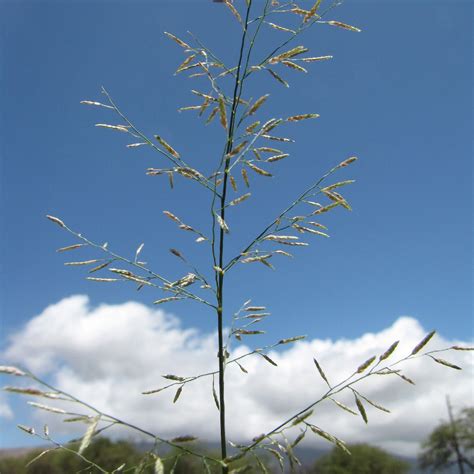The Ultimate Guide to Eragrostis: A Versatile Grass for Landscapes and Beyond
Introduction
Eragrostis, a genus of approximately 350 species of grasses, stands out for its diverse capabilities and ornamental charm. From its ecological significance to its horticultural applications, this versatile grass offers a wide range of benefits. This comprehensive guide delves into the world of Eragrostis, exploring its characteristics, cultivation practices, and multifaceted uses.
Characteristics of Eragrostis
Eragrostis species exhibit a range of physical attributes that distinguish them from other grasses. Key characteristics include:

-
Fine leaves: Narrow and linear leaves, often with a bluish or gray-green hue.
-
Compact flowerheads: Tightly packed, spike-like inflorescences.
-
Dwarf stature: Many species grow in dense clumps, remaining relatively short in height.
-
Drought tolerance: Eragrostis grasses are renowned for their ability to withstand arid conditions.
-
Self-seeding: Certain species readily self-sow, spreading their seeds naturally.
Cultivation of Eragrostis
Cultivating Eragrostis is relatively straightforward, making it an accessible choice for both home gardeners and landscape professionals. Here's a step-by-step approach:
1. Site Selection
- Choose a location with well-drained soil that receives ample sunlight.
- Eragrostis can tolerate a wide range of soil pH levels, but it prefers slightly alkaline conditions.
2. Soil Preparation
- Amend the soil with compost or organic matter to improve drainage and fertility.
- Ensure the soil is loose and crumbly before planting.
3. Planting
- Sow seeds directly into the soil in the spring or fall.
- Lightly cover the seeds with a thin layer of soil.
- Water the seeds well and keep the soil moist until germination occurs.
- For larger areas, use plugs or sod for quicker establishment.
4. Care
- Eragrostis requires minimal watering once established.
- Fertilize sparingly, using a slow-release fertilizer in the spring.
- Remove dead or damaged foliage to promote healthy growth.
- Divide clumps every few years to maintain vigor.
Uses of Eragrostis
Eragrostis has a multitude of applications, ranging from landscaping to environmental conservation:

1. Landscaping
- Ornamental: Eragrostis species such as Lovegrass and Purple Lovegrass are prized for their attractive foliage and flowerheads. They add texture and movement to gardens.
- Groundcover: Dwarf species like Weeping Lovegrass form dense, low-growing mats that suppress weeds and enhance soil stability.
- Xeriscaping: Eragrostis's drought tolerance makes it an ideal choice for water-wise landscapes in arid regions.
2. Environmental Benefits
- Erosion control: Eragrostis's dense root system helps prevent soil erosion in areas exposed to wind or water.
- Wildlife habitat: Certain Eragrostis species provide food and shelter for birds, insects, and other wildlife.
- Carbon sequestration: Eragrostis, like other grasses, absorbs carbon dioxide from the atmosphere, contributing to climate change mitigation.
Benefits of Using Eragrostis
Incorporating Eragrostis into landscapes or conservation projects offers numerous advantages:
-
Low maintenance: Requires minimal watering and fertilization.
-
Drought resistant: Tolerates dry conditions, reducing the need for irrigation.
-
Ornamental value: Adds visual interest and texture to gardens.
-
Environmental benefits: Supports wildlife, prevents erosion, and sequesters carbon.
-
Pest and disease resistance: Eragrostis is generally resistant to pests and diseases.
Conclusion
Eragrostis, with its remarkable diversity and versatility, is a valuable grass that enriches landscapes and supports ecosystems. Its characteristics, ease of cultivation, and wide-ranging applications make it an excellent choice for home gardeners, landscape designers, and conservationists alike. By embracing the multifaceted benefits of Eragrostis, we can create sustainable and aesthetically pleasing environments while contributing to the planet's well-being.

Call to Action
Explore the vast array of Eragrostis species and incorporate this versatile grass into your garden or conservation project. Its adaptability, beauty, and environmental benefits will impress you and make a positive impact on the world around you.

Useful Tables
Table 1: Common Eragrostis Species and Their Characteristics
| Species |
Height |
Leaf Color |
Flower Color |
Uses |
| Lovegrass (E. curvula) |
1-3 ft |
Blue-green |
Brownish-purple |
Ornamental, groundcover, erosion control |
| Purple Lovegrass (E. spectabilis) |
1-2 ft |
Purple-green |
Purple |
Ornamental, xeriscaping |
| Weeping Lovegrass (E. trichodes) |
6-12 in |
Blue-green |
Brownish-purple |
Groundcover, erosion control |
| Indian Lovegrass (E. intermedia) |
1-3 ft |
Gray-green |
Brownish-purple |
Pasture, forage, erosion control |
| Lehmann Lovegrass (E. lehmanniana) |
1-2 ft |
Gray-green |
Purple |
Pasture, forage, erosion control |
Table 2: Nutritional Value of Eragrostis Grass
| Nutrient |
Amount per 100 g |
| Protein |
10-12% |
| Digestible energy |
70-80% |
| Crude fiber |
20-25% |
| Total ash |
10-12% |
| Calcium |
0.5-1.0% |
| Phosphorus |
0.3-0.4% |
Table 3: Water Requirements of Eragrostis Grass
| Species |
Water Requirements |
| Lovegrass (E. curvula) |
Moderate |
| Purple Lovegrass (E. spectabilis) |
Low |
| Weeping Lovegrass (E. trichodes) |
Low |
| Indian Lovegrass (E. intermedia) |
Moderate |
| Lehmann Lovegrass (E. lehmanniana) |
Low |
